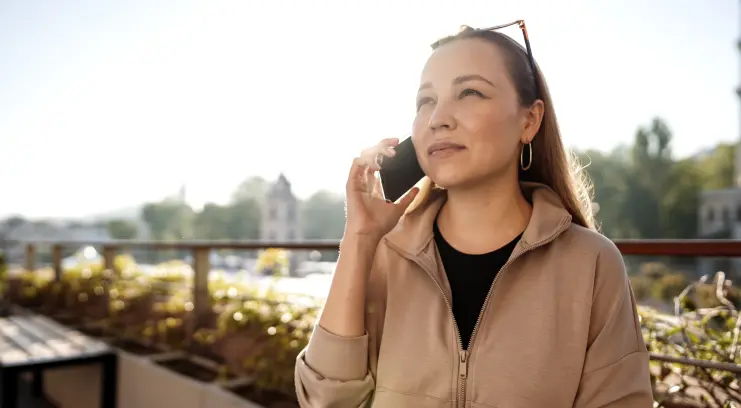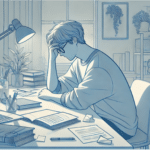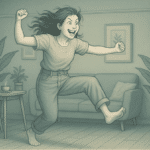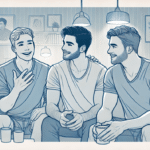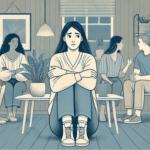Key Takeaways
- Trichotillomania involves complex biological factors that create a sense of relief or pleasure when pulling hair.
- Hair pulling often becomes a coping mechanism and habit due to a cycle of tension, pulling, temporary relief, and changes in brain chemistry that reinforces the behavior.
- Common triggers for trichotillomania include stress, anxiety, boredom, and specific environmental factors.
- Effective treatment options include Cognitive Behavioral Therapy (CBT), Habit Reversal Training (HRT), and mindfulness techniques that help recognize triggers and develop healthier coping mechanisms.
- At A Mission For Michael (AMFM), we offer comprehensive mental health treatment that can address trichotillomania when it presents alongside other mental health conditions so that we can provide personalized care and support.
Why Does Pulling Hair (Trichotillomania) Feel Good?
Trichotillomania is a perplexing condition where the act of pulling hair gives a sense of relief or satisfaction. This might seem odd at first, but there’s a complex interplay of psychological and biological factors at work.
Biological Responses and Endorphin Release
When hair is pulled, the body may release endorphins, which are chemicals that make us feel good. This response is similar to the pleasure one might feel after exercise or eating chocolate. The release of these chemicals can create a sense of euphoria that reinforces the hair-pulling behavior.
Habit Formations and Brain Chemistry
Over time, the brain can start to associate hair-pulling with relief and pleasure. This creates a cycle where the individual is compelled to pull hair to achieve that same feeling. It’s a bit like how people might reach for comfort food when they’re stressed. The brain’s reward system plays a big role in reinforcing this habit.
Psychological Reasons and Coping Mechanism
Beyond the biological reasons, there are psychological factors at play. Many individuals with trichotillomania use hair-pulling as a coping mechanism because it gives a sense of control in situations where they might feel powerless.
Triggers Leading to Hair Pulling
Common triggers of trichotillomania include stress, anxiety, and boredom. For some, a specific situation or emotion might trigger the urge to pull hair.
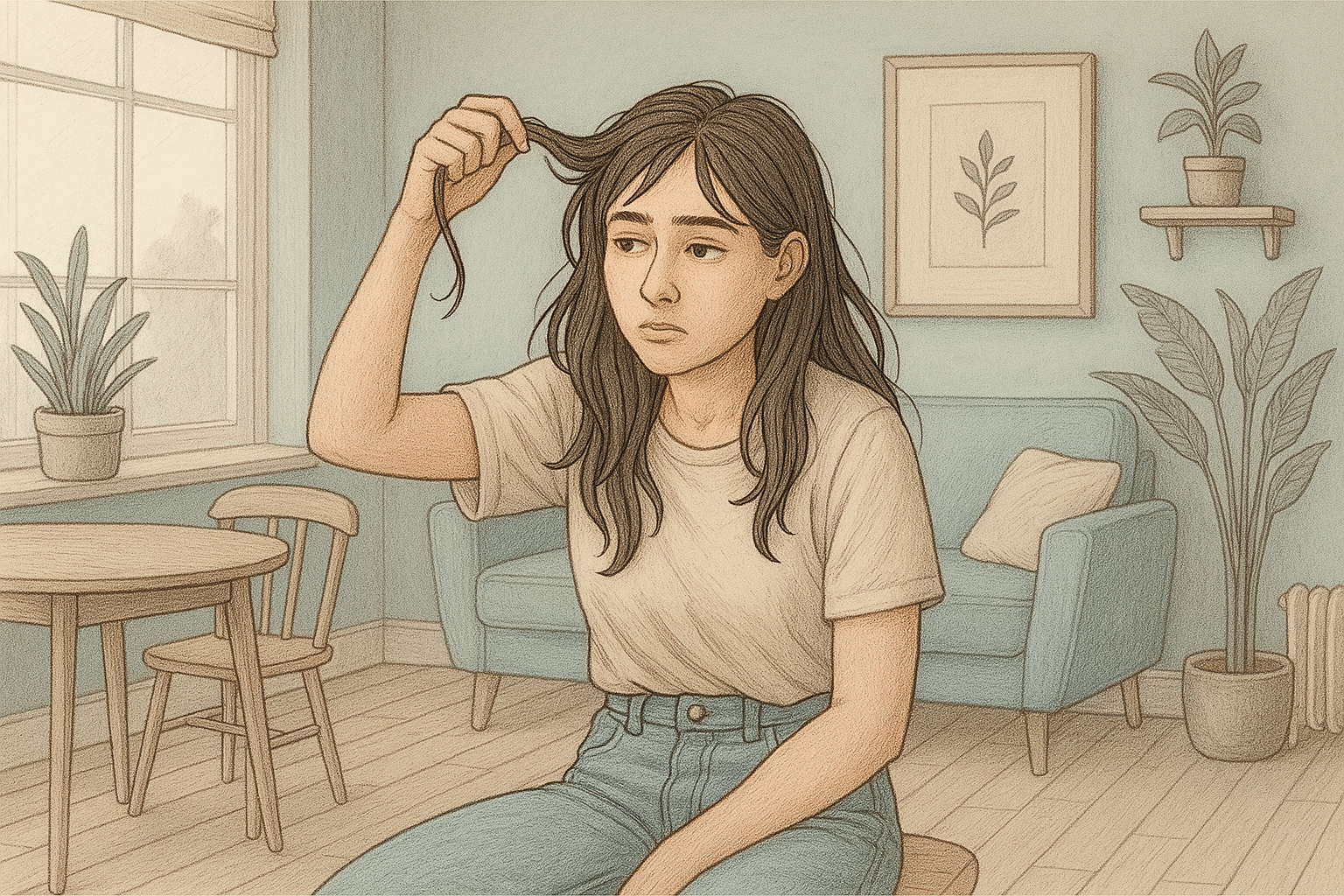
If your personal trigger is boredom, recognizing this as a trigger can help you develop strategies to manage the behavior.
Besides that, environmental factors such as being alone or having idle hands can increase the likelihood of hair-pulling. Creating a supportive environment and developing alternative coping strategies can help reduce the urge to pull hair.
Founded in 2010, A Mission For Michael (AMFM) offers specialized mental health care across California, Minnesota, and Virginia. Our accredited facilities provide residential and outpatient programs, utilizing evidence-based therapies such as CBT, DBT, and EMDR.
Our dedicated team of licensed professionals ensures every client receives the best care possible, supported by accreditation from The Joint Commission. We are committed to safety and personalized treatment plans.
The Cycle of Trichotillomania
The cycle of trichotillomania often begins with a trigger, such as stress or boredom, which leads to the urge to pull hair. Once the hair is pulled, the individual feels a temporary sense of relief or satisfaction. However, this is often followed by feelings of guilt or shame, which can lead to more stress and, consequently, more hair pulling. It’s a vicious cycle that can be challenging to break.
How the Cycle is Reinforced
The immediate gratification that comes from pulling hair reinforces the cycle. Each time hair is pulled, the brain releases endorphins, which create a sense of pleasure and calm. This positive reinforcement strengthens the behavior, making it more likely to occur again in the future.
Additionally, people with trichotillomania might avoid situations or activities where they might be seen pulling their hair, which can lead to isolation and further distress.
Breaking the Pattern
Breaking the pattern of trichotillomania requires conscious effort and strategies that address both the underlying triggers and the behavior itself.
Many people find success by first becoming aware of and then actively avoiding situations that typically prompt hair-pulling episodes. This might involve recognizing specific emotional states, environmental factors, or physical sensations that often precede the urge to pull.
Substitution techniques can be particularly effective, where you deliberately replace hair pulling with alternative behaviors when the urge arises.
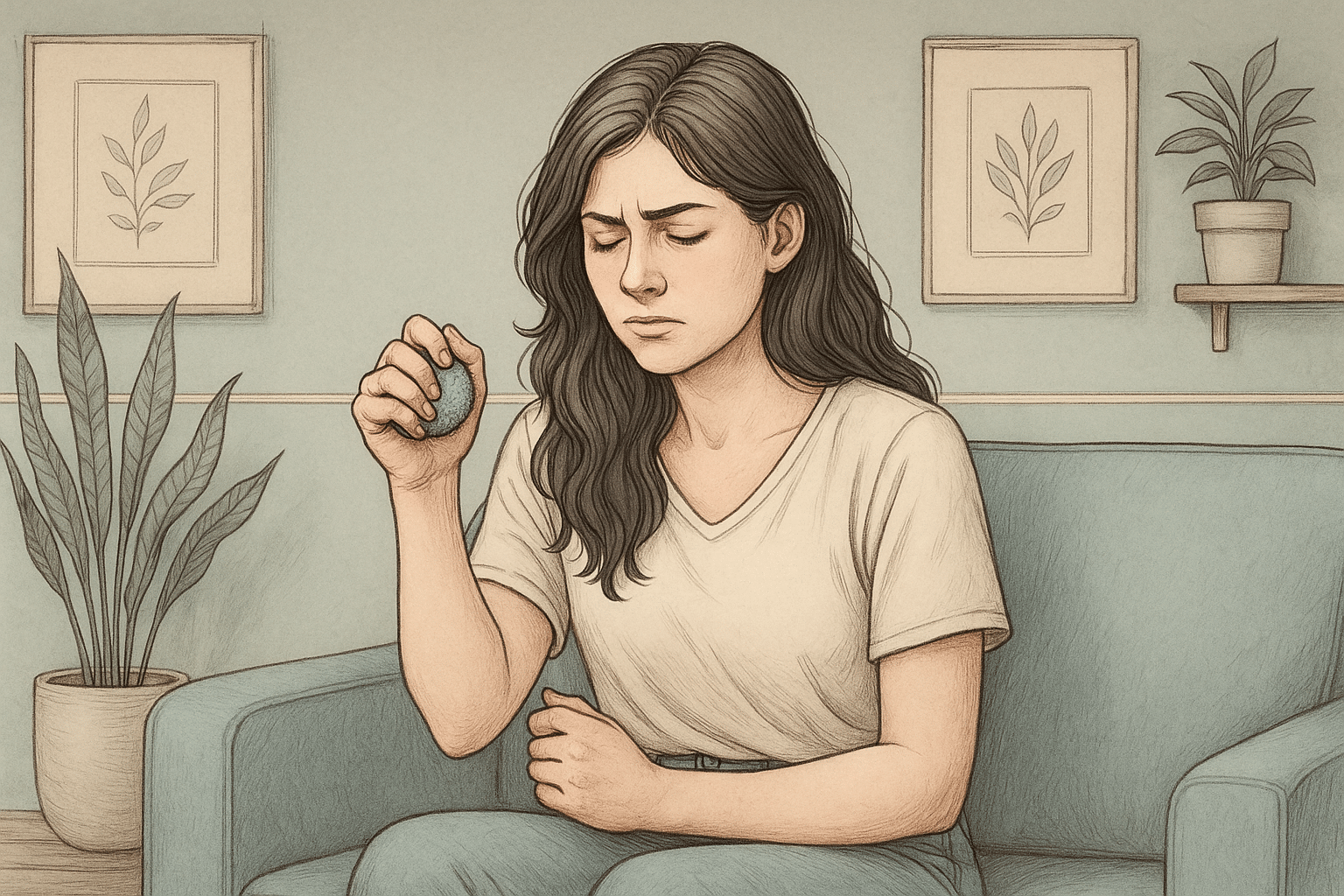
Squeezing a stress ball or engaging in crafts that keep hands busy can provide similar sensory satisfaction without the damaging effects.
Incorporating regular mindfulness practices into daily routines also helps manage the stress levels that often exacerbate trichotillomania symptoms.
Physical and Emotional Impact of Trichotillomania
Damage to Hair and Skin
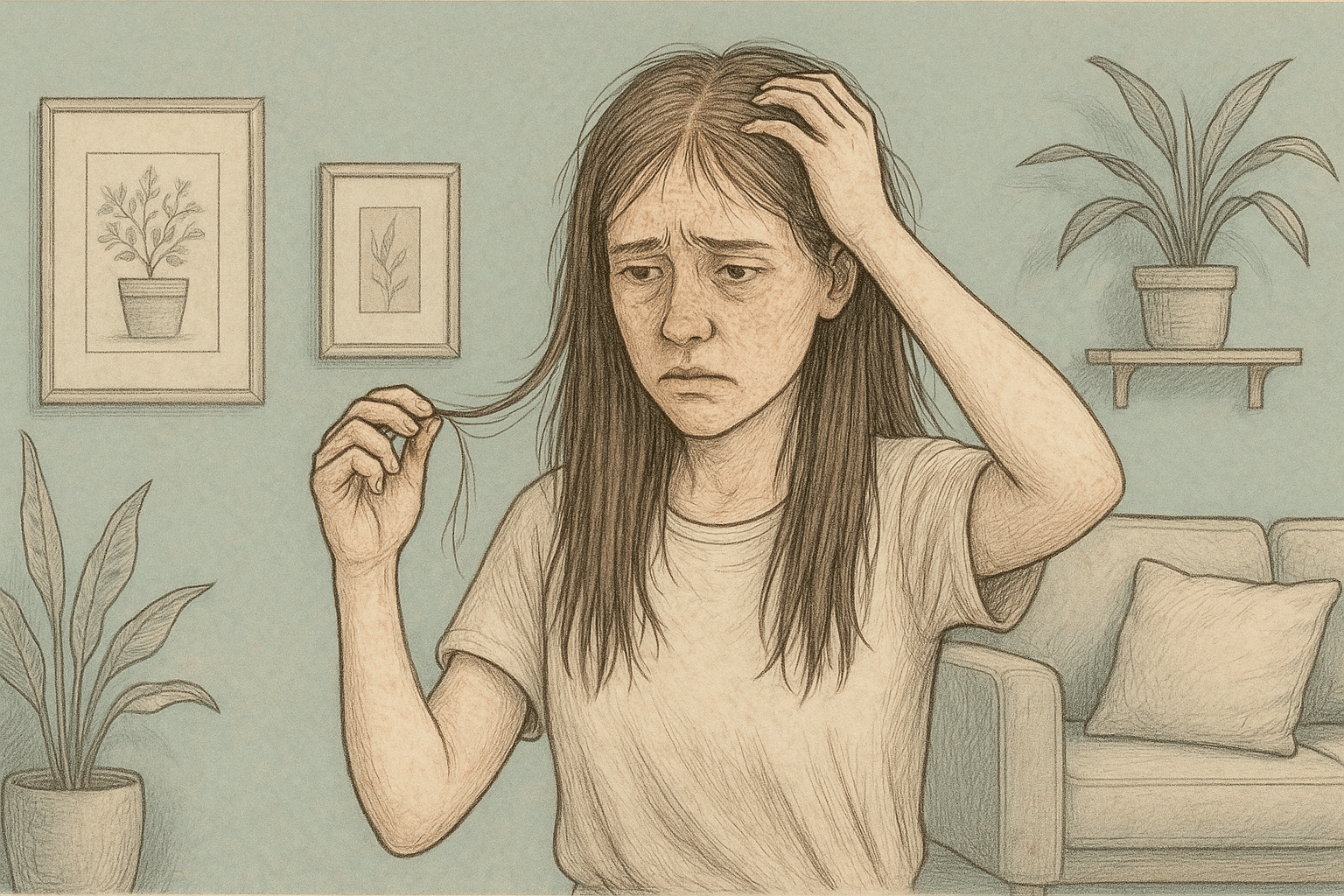
Continuous hair-pulling can cause noticeable damage to both hair and skin.
Individuals may experience bald patches or thinning hair, which can be distressing. The repeated trauma to hair follicles can sometimes lead to permanent hair loss. Besides hair, the skin on the scalp or other areas may become irritated or scarred due to constant pulling.
Emotional Toll and Stigma
Many individuals feel embarrassed or ashamed of their behavior, leading to low self-esteem. This can result in social withdrawal, where the person avoids situations where others might notice their hair-pulling. The stigma associated with the disorder often exacerbates feelings of isolation and shame.
Long-term Consequences on Health
Over time, trichotillomania can have lasting effects on an individual’s health. Chronic stress and anxiety associated with the disorder can cause a mental breakdown. Additionally, the physical consequences, like skin infections or permanent hair loss, can contribute to ongoing emotional distress. Address these long-term consequences to improve overall quality of life.
Managing Trichotillomania
Practical Steps to Minimize Trigger Exposure
Keeping a hair-pulling diary to track patterns and triggers is an essential step in managing trichotillomania. This helps you identify specific situations, emotions, and environments that cause pulling episodes. Once these patterns emerge, you can develop personalized strategies to either avoid these triggers or prepare coping mechanisms in advance.
Also, consider modifying your environment to reduce opportunities to unconsciously pull your hair. This might involve wearing gloves or fingertip bandages during high-risk periods, changing your seating arrangement to discourage absent-minded touching, or altering lighting to make examining hairs more difficult.
By taking these comprehensive steps to identify and minimize triggers, you can significantly reduce the likelihood of hair-pulling.
Support Groups and Community Resources
Connecting with others who understand the challenges of trichotillomania can be incredibly helpful. Support groups provide a safe space to share experiences and coping strategies.
Community resources, both online and offline, can offer valuable information and support for individuals and their families. You’re not alone in this journey—reaching out for support can make a significant difference.
Seeking Professional Help
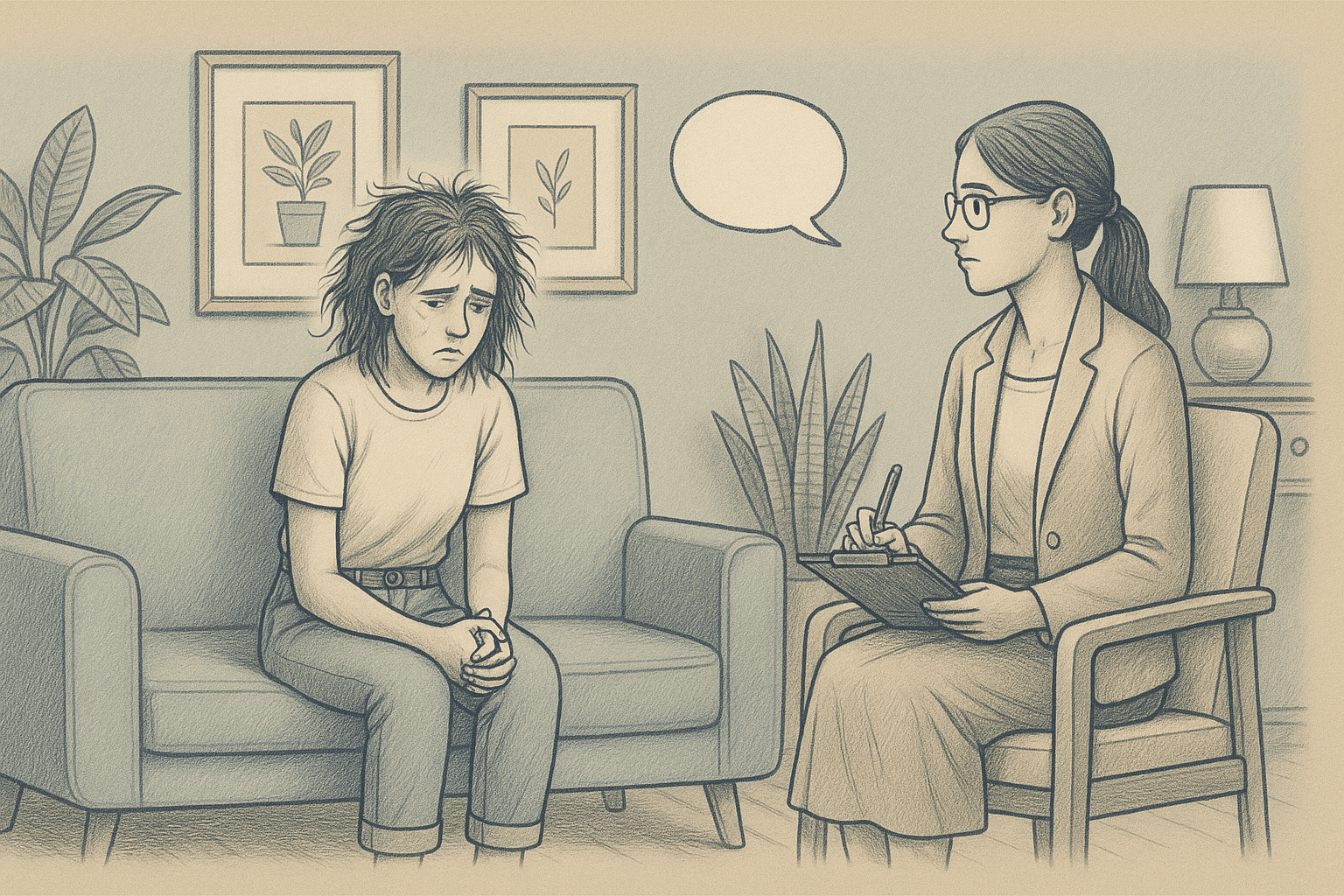
If hair-pulling is affecting your daily life, relationships, or emotional well-being, it’s time to seek help from a specialist.
A mental health professional can help determine the severity of your disorder and recommend appropriate treatment options. Behavioral therapies, such as Cognitive Behavioral Therapy (CBT), have shown to be effective in treating trichotillomania. These therapies help you understand the thoughts and feelings that lead to hair-pulling and develop strategies to change these behaviors.
Techniques like habit reversal training can also be beneficial, teaching you to replace hair-pulling with less harmful behaviors.
Besides therapy, some individuals may benefit from medications that help manage anxiety or depression. Work closely with a healthcare provider to find the most effective treatment plan for your needs.
Finding Healing With AMFM
Understanding why hair pulling feels good is crucial to addressing trichotillomania effectively. At A Mission For Michael (AMFM), we recognize the complex nature of trichotillomania and its connection to other mental health conditions like anxiety and OCD.
Our expert clinical team uses evidence-based therapies like Cognitive Behavioral Therapy (CBT), Habit Reversal Training (HRT), and Dialectical Behavior Therapy (DBT) to address the underlying triggers of trichotillomania and develop healthier coping strategies.
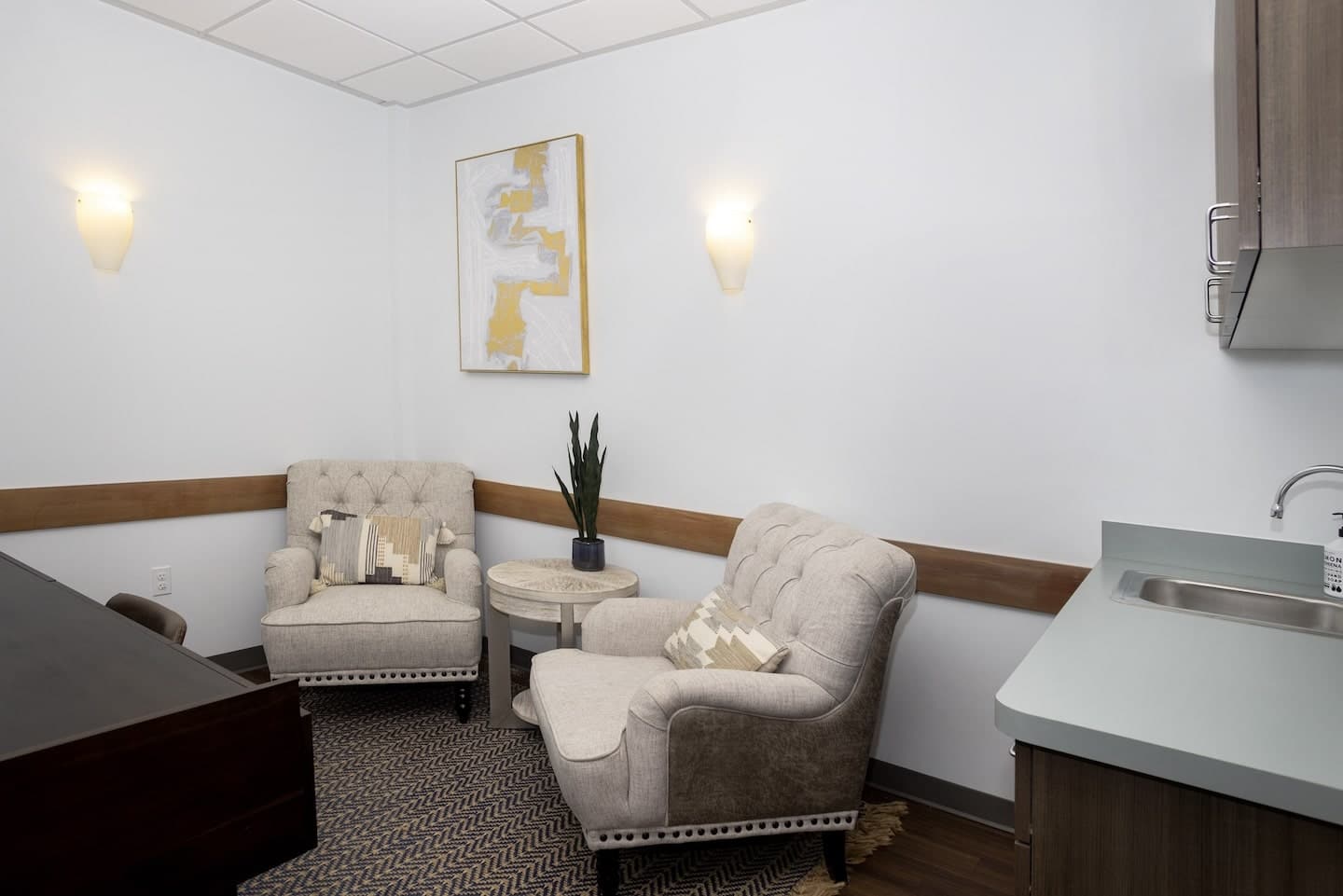
With locations in California, Virginia, and Washington, we provide personalized care in both residential and outpatient settings to support your recovery journey.
If you’re struggling with hair pulling and other mental health challenges, contact our admission counselors today for a confidential assessment to determine the best treatment options for your specific needs.
Frequently Asked Questions ( FAQs)
What exactly is trichotillomania and why does it happen?
Trichotillomania is a mental health condition characterized by recurrent, irresistible urges to pull out hair from the scalp, eyebrows, eyelashes, or other parts of the body. It happens due to a combination of biological factors (endorphin release), psychological factors (as a coping mechanism for stress and anxiety), and habit formation in the brain’s reward system.
Can trichotillomania be cured?
While there is no definitive cure for trichotillomania, it can be effectively managed with the right treatment and support. Many individuals experience significant improvements through therapy, medication, and lifestyle changes.
Do medications help with trichotillomania?
Medications can be helpful for some individuals, particularly if they also struggle with anxiety or depression. Antidepressants or other medications may be prescribed to help manage these co-occurring conditions.
Is trichotillomania related to stress or anxiety?
Yes, stress and anxiety are common triggers for trichotillomania. Many individuals find that hair-pulling provides temporary relief from these emotions. Therefore, addressing underlying stress and anxiety is crucial in managing the disorder effectively.
Does AMFM treat trichotillomania?
AMFM provides comprehensive treatment for trichotillomania. Our comprehensive approach includes Cognitive Behavioral Therapy and mindfulness therapy that address the root cause of the condition. We offer both inpatient residential treatment with 24/7 support and outpatient options with flexible scheduling depending on the severity of your symptoms.




